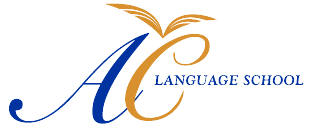- Develop an understanding of basic mathematical concepts such as addition, subtraction, multiplication, and division
- Understand how to use numbers in real-world contexts
- Learn how to solve problems using equations and inequalities
- Gain an understanding of basic geometry principles such as angles, lines, and shapes
- Learn how to analyze data using graphs and tables
- Understand the basics of probability theory and statistics
- Develop problem-solving skills through engaging in activities and projects
- Acquire knowledge on how to use technology for teaching math (K-5)
- Develop critical thinking skills through mathematical reasoning and logic puzzles
- Learn how to apply mathematical concepts in everyday life situations
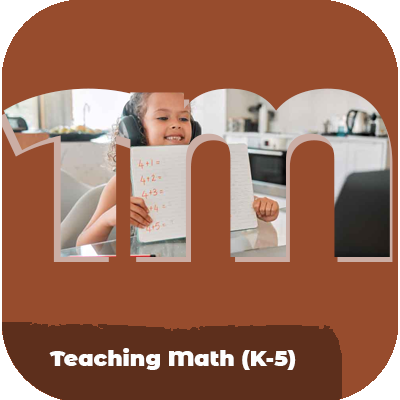 Teaching Math (K-5) Course Description: This online course is designed to help students understand math as a coherent whole. Through engaging problem-based curriculum, students will learn the fundamentals of mathematics from kindergarten to grade 5. The course will provide an inclusive approach and cover topics such as arithmetic, algebra, geometry, data analysis, and probability. Course Objectives:
Teaching Math (K-5) Course Description: This online course is designed to help students understand math as a coherent whole. Through engaging problem-based curriculum, students will learn the fundamentals of mathematics from kindergarten to grade 5. The course will provide an inclusive approach and cover topics such as arithmetic, algebra, geometry, data analysis, and probability. Course Objectives: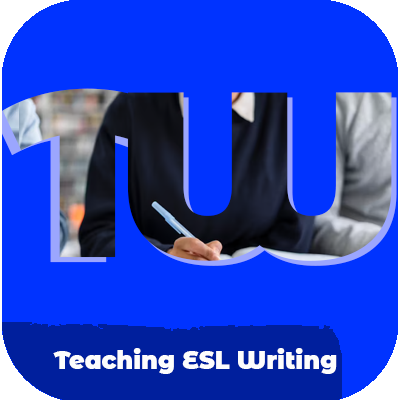 ESL Writing Course Description: This course will equip you with the skills to write good persuasive essays in English, as well as improve your critical thinking skills. You'll also learn about grammar and punctuation, and how to enhance your writing style. Course Objectives:
ESL Writing Course Description: This course will equip you with the skills to write good persuasive essays in English, as well as improve your critical thinking skills. You'll also learn about grammar and punctuation, and how to enhance your writing style. Course Objectives:- Develop knowledge of English grammar
- Learn how to write persuasive essays in English
- Improve critical thinking skills
- Master grammar and punctuation
- Enhance writing style
- Write clear sentences in English using a variety of tenses
- Understand the basics of writing clear sentences in English
- Learn how to write logically and clearly
- Get valuable feedback on written work
- Practice writing skills with confidence
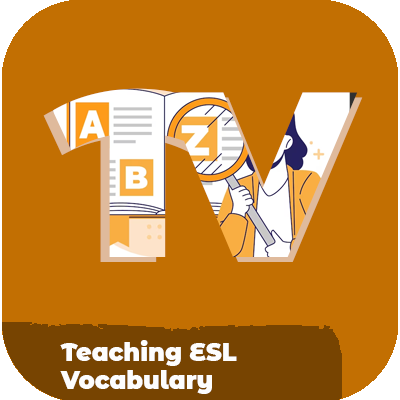 Teaching ESL Vocabulary Course Description: Are you looking to help your students learn English as a second language? This online course will provide you with the tools and strategies you need to effectively teach ESL vocabulary. You'll learn how to present words with visual stimuli, attach context to vocabulary, use computers and television, use audio books, brainstorm, activate schema to introduce new vocabulary, understand the tier system of vocab, make it fun, model new vocabulary and build upon existing knowledge. By the end of this course, you'll have all the skills necessary to successfully teach ESL vocabulary. Course Objectives:
Teaching ESL Vocabulary Course Description: Are you looking to help your students learn English as a second language? This online course will provide you with the tools and strategies you need to effectively teach ESL vocabulary. You'll learn how to present words with visual stimuli, attach context to vocabulary, use computers and television, use audio books, brainstorm, activate schema to introduce new vocabulary, understand the tier system of vocab, make it fun, model new vocabulary and build upon existing knowledge. By the end of this course, you'll have all the skills necessary to successfully teach ESL vocabulary. Course Objectives:- Understand the tier system of vocab
- Present words with visual stimuli
- Attach context to vocabulary
- Use computers and television for teaching ESL vocabulary
- Use audiobooks for teaching ESL vocabulary
- Brainstorm on a topic for teaching ESL vocabulary
- Activate schema to introduce new vocabulary
- Make learning fun and engaging for students
- Model new vocabulary for students
- Build upon the existing knowledge of students when introducing new words
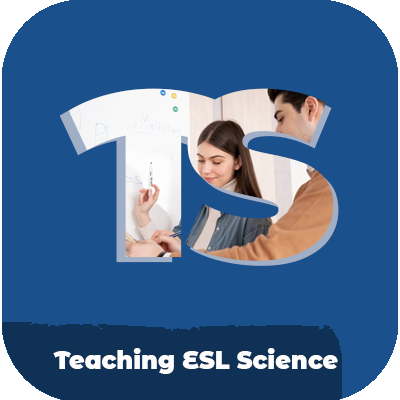 Teaching ESL Science Course Description: This course is designed to provide teachers with the knowledge and skills needed to effectively teach science to English language learners (ELLs). The course will cover strategies for teaching science to ELLs, including how to scaffold instruction, build vocabulary, use inquiry-based lessons, and incorporate interactive activities. By the end of the course, participants will have a better understanding of how to create engaging lessons that meet the needs of their ELL students. Course Objectives:
Teaching ESL Science Course Description: This course is designed to provide teachers with the knowledge and skills needed to effectively teach science to English language learners (ELLs). The course will cover strategies for teaching science to ELLs, including how to scaffold instruction, build vocabulary, use inquiry-based lessons, and incorporate interactive activities. By the end of the course, participants will have a better understanding of how to create engaging lessons that meet the needs of their ELL students. Course Objectives:- Understand the challenges faced by ELLs when learning science
- Learn strategies for scaffolding instruction for ELLs in science classes
- Identify ways to build vocabulary related to science topics
- Develop inquiry-based lessons that are accessible for ELLs
- Incorporate interactive activities into lesson plans for ELLs in science classes
- Utilize visuals and tactile projects when teaching science concepts to ELLs
- Create an environment that encourages collaboration between ESL and classroom teachers when teaching science concepts to ELLs
- Understand how literature can be used as a tool for teaching science concepts to ELLs
- Analyze data from observations made during experiments conducted by ELL students in order to draw conclusions about scientific principles and theories being studied in class
- Design lesson plans that are tailored towards meeting the needs of individual ELL students in a classroom setting
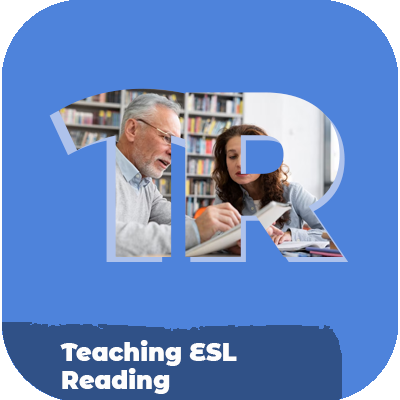 Teaching ESL Reading Course Description: This course is designed to equip teachers with the knowledge and skills necessary to effectively teach reading to English language learners (ELLs). Participants will learn strategies for teaching English reading that focus on building core literacy skills such as listening, speaking, writing, and vocabulary development. The course will cover topics such as selecting age-appropriate texts, using visuals and multimedia elements in lessons plans, creating context clues to support comprehension, determining instructional objectives, scaffolding instruction for ELLs in diverse settings, assessing student learning styles and abilities, planning activities that foster engagement and collaboration between students, and utilizing a variety of evidence-based strategies when assessing student progress. Course Objectives:
Teaching ESL Reading Course Description: This course is designed to equip teachers with the knowledge and skills necessary to effectively teach reading to English language learners (ELLs). Participants will learn strategies for teaching English reading that focus on building core literacy skills such as listening, speaking, writing, and vocabulary development. The course will cover topics such as selecting age-appropriate texts, using visuals and multimedia elements in lessons plans, creating context clues to support comprehension, determining instructional objectives, scaffolding instruction for ELLs in diverse settings, assessing student learning styles and abilities, planning activities that foster engagement and collaboration between students, and utilizing a variety of evidence-based strategies when assessing student progress. Course Objectives:- Understand the challenges faced by ELLs when learning to read
- Learn strategies for scaffolding instruction for ELLs in reading classes
- Identify ways to build vocabulary related to reading topics
- Develop age-appropriate lesson plans that incorporate visuals and multimedia elements
- Explore ways of creating context clues to support comprehension by ELLs
- Analyze student language assessments in order to determine individualized instructional objectives
- Make use of evidence-based strategies when developing effective lesson plans for ELLs
- Design activities that promote engagement among ELL students in reading classrooms
- Understand how to evaluate student learning styles and abilities when teaching literacy skills
- Incorporate best practices for assessing student progress in courses related to teaching ESL reading
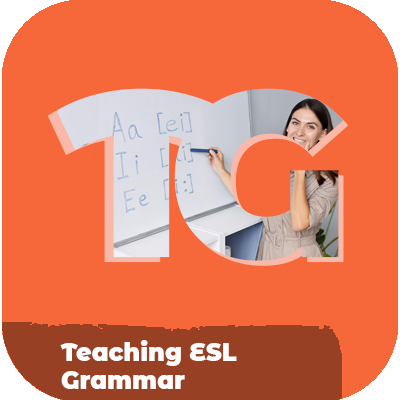 Teaching ESL Grammar Course Description: This course is designed to provide teachers with the tools and strategies needed to effectively teach grammar to English language learners (ELLs). Through this course, participants will gain an understanding of the basics of English grammar, learn how to select appropriate materials for grammar instruction, and master the fundamentals of teaching grammar rules and syntax. The course will cover topics such as creating context clues to support comprehension among ELLs, developing activities that foster engagement between students in a classroom setting, assessing student learning styles and abilities, utilizing interactive activities when teaching grammar concepts, scaffolding instruction for ELLs in diverse settings, planning lessons with age-appropriate content and objectives, and utilizing a variety of evidence-based strategies when assessing student progress. Course Objectives:
Teaching ESL Grammar Course Description: This course is designed to provide teachers with the tools and strategies needed to effectively teach grammar to English language learners (ELLs). Through this course, participants will gain an understanding of the basics of English grammar, learn how to select appropriate materials for grammar instruction, and master the fundamentals of teaching grammar rules and syntax. The course will cover topics such as creating context clues to support comprehension among ELLs, developing activities that foster engagement between students in a classroom setting, assessing student learning styles and abilities, utilizing interactive activities when teaching grammar concepts, scaffolding instruction for ELLs in diverse settings, planning lessons with age-appropriate content and objectives, and utilizing a variety of evidence-based strategies when assessing student progress. Course Objectives:- Understand the challenges faced by ELLs when learning grammar
- Learn strategies for scaffolding instruction for ELLs in grammar classes
- Identify ways to build vocabulary related to grammar topics
- Develop age-appropriate lesson plans that incorporate visuals and multimedia elements
- Explore ways of creating context clues to support comprehension by ELLs
- Analyze student language assessments in order to determine individualized instructional objectives
- Make use of evidence-based strategies when developing effective lesson plans for ELLs
- Design activities that promote engagement among ELL students in grammar classrooms
- Understand how to evaluate student learning styles and abilities when teaching basic English grammatical principles
- Incorporate best practices for assessing student progress in courses related to teaching ESL Grammar
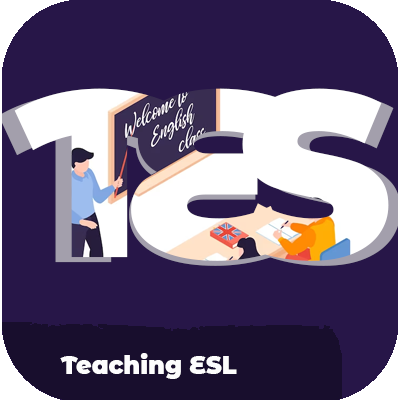 Teaching ESL Course Description: Are you looking to become an ESL teacher? If so, this online course is for you! This course will provide you with the knowledge and skills necessary to become a successful ESL teacher. You will learn about the different methods of teaching ESL, how to assess students’ language abilities, and how to create a stimulating learning environment. By the end of this course, you will be able to confidently teach English as a Second Language (ESL) in any setting. Course Objectives:
Teaching ESL Course Description: Are you looking to become an ESL teacher? If so, this online course is for you! This course will provide you with the knowledge and skills necessary to become a successful ESL teacher. You will learn about the different methods of teaching ESL, how to assess students’ language abilities, and how to create a stimulating learning environment. By the end of this course, you will be able to confidently teach English as a Second Language (ESL) in any setting. Course Objectives:- Understand the fundamentals of teaching English as a Second Language (ESL)
- Analyze the different methods of teaching ESL, such as Direct Method and Communicative Language Teaching (CLT)
- Learn how to assess students’ language abilities and create lesson plans accordingly
- Develop strategies for creating a stimulating learning environment for ESL students
- Understand how to use technology in the classroom when teaching ESL
- Identify common challenges faced by ESL teachers and develop solutions for them
- Learn how to effectively communicate with parents/guardians of ESL students
- Understand best practices for working with English Language Learners (ELLs)
- Become familiar with Do's & Don'ts when teaching English-language learners in the classroom or online setting
- Gain insight into the requirements and salary expectations of an ESL teacher position in various settings such as schools or private tutoring services
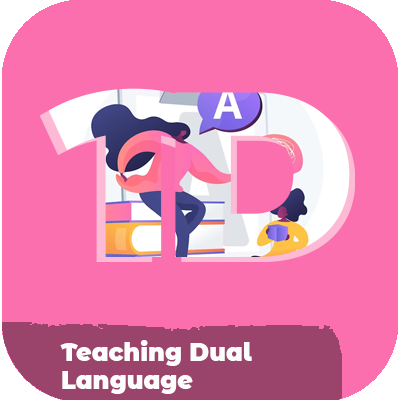 Teaching Dual Language Course Description: This course is designed to provide an overview of dual language instruction, which is a type of bilingual education program in which students learn academic content in two languages. The course will cover topics such as the structure and goals of dual language programs, strategies for teaching young dual language learners, best practices for teaching dual language and other bilingual programs, and how to work with dual language learners in diverse classrooms. Course Objectives:
Teaching Dual Language Course Description: This course is designed to provide an overview of dual language instruction, which is a type of bilingual education program in which students learn academic content in two languages. The course will cover topics such as the structure and goals of dual language programs, strategies for teaching young dual language learners, best practices for teaching dual language and other bilingual programs, and how to work with dual language learners in diverse classrooms. Course Objectives:- Understand the structure and goal of a class’s bilingual education
- Use welcoming signage and displays
- Take a critical approach to materials selection
- Incorporate explicit vocabulary instruction to help DLL children learn new words
- Support children’s language learning by using repetition and modeling of new words
- Utilize multilingual resources to fuel science inquiry with multilingual learners
- Develop academic skills in both native and partner languages
- Learn how to create a supportive classroom environment for DLLs
- Implement effective instructional strategies for working with DLLs
- Understand the different types of bilingual education programs available (e.g., dual language programs)
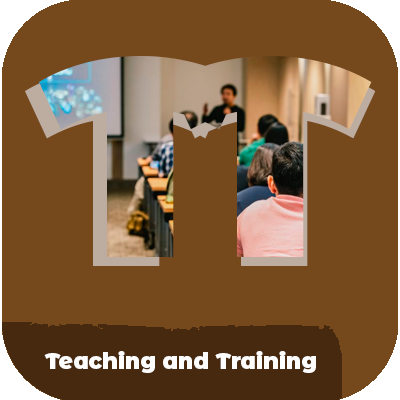 Teaching and Training Course Description:
Teaching and Training Course Description:This online course provides an introduction to teaching and training. It covers the basics of teaching, including curriculum planning and development, instructional design, delivery methods, assessment techniques, and evaluation of learning. You will learn about different techniques used in creating a learning environment as well as how to assess knowledge acquisition in learners. You will also gain an understanding of how to use instructional technologies such as multimedia and simulate training environments.
Through interactive lectures, readings, discussions, videos, and assignments you will develop your knowledge of pedagogical principles while learning practical skills such as lesson planning, course design, student assessment, and communication strategies for teaching. This course is ideal for those who are looking to enhance their teaching skills or are interested in pursuing a career in the field of education or training. Course Objectives:- Understand the basic principles of teaching
- Plan lessons effectively
- Utilize instructional technologies
- Develop engaging courses
- Analyze evaluation results
- Evaluate student progress
- Comprehend different methods of delivery
- Master assessment techniques
- Develop communication strategies
- Identify curriculum needs
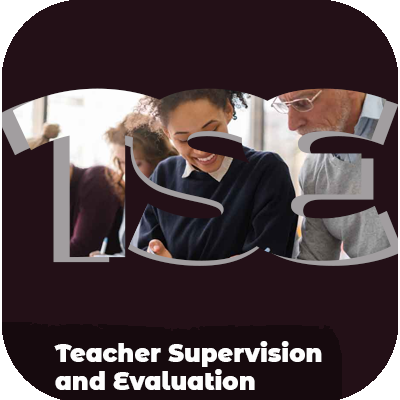 Description: This course will focus on criteria for effective instruction, techniques for effective supervision which promotes teacher professional growth, and teacher evaluation.Prerequisite: Graduate Program in EducationLearning Objectives: Students will
Description: This course will focus on criteria for effective instruction, techniques for effective supervision which promotes teacher professional growth, and teacher evaluation.Prerequisite: Graduate Program in EducationLearning Objectives: Students will- Identify characteristics of effective teaching.
- Differentiate between formative and summative evaluation.
- Demonstrate an understanding of issues and problems in supervision.
- Identify the role differences of the supervisor as teacher, facilitator, evaluator, counselor, and curriculum advisor.
- Demonstrate knowledge and skill in using specific techniques in observing and conferencing with teachers.
- Plan and model effective pre- and post-conferences.
- Understand supervision as a moral action.
- Identify and discuss adult and teacher development issues related to effective teaching.
